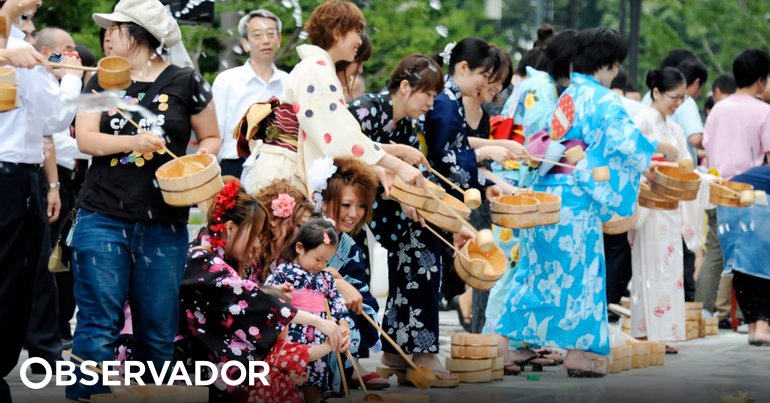
World heat records continue to fall. After June, the month of july was the hottest as long as there is registration. Turning on the air conditioning is probably the first idea that comes to mind when someone thinks about cooling off. However, in countries like Spain, Japan or China, there are different – and innovative – solutions to deal with very hot days. Among them are the famous facekiniwater parties or aqueducts that cool the air.
July was the hottest month ever recorded on Earth
In Spain, a town in Madrid organizes an annual party whose aim is to refresh all participants. A “Naval Battle” – this year celebrated on the 16th of July – helped the thousands of people who gathered in the streets of Vallecas and had fun with pistols and water balloons to withstand the heat.
Vallecas pic.twitter.com/zXoDfKxHUy
— Bruno Thevenin (@BrunoThevenin) July 16, 2023
Further south, Seville gets a cool breeze from the CartridgeQanat, an architectural experiment with cooling solutions that do not depend on burning fossil fuels that heat the planet. The site includes two auditoriums, green spaces, a promenade, a shady area with benches and the qanat, a network of underground aqueducts can lower the ambient temperature by up to 10 degrees Celsius. The qanat uses only air, water and solar energy and is inspired by the model of ancient tunnels dug to bring water to agricultural fields.
“It is not an air conditioning system like the one you have at home,” explained Juan Luis López, project supervisor, quoted in Bloomberg. “We use natural techniques and materials to reduce temperatures,” he said.
An urban transformation project based on innovative bioclimatic technologies. Cartuja Qanat is one of the initiatives that #Sevilla launched by promoting public-private collaboration in the municipal strategy against climate change. pic.twitter.com/9QNjxf3cee
— Sevilla City Office (@SevillaTourism) May 3, 2023
“The goal is test the technology, learn from it and fine-tune it so we can replicate what works elsewhere,” added Juan Luis López.
In Japan, many are those who have already adhered to the fashion of fan jackets. From the outside, you might think it’s an inflatable, but that’s just the effect of the wind.. When the jacket is closed, interior fans help create a personal microenvironment with a breeze to keep people cool.
Another way the Japanese keep cool is to “throw away the heat”. Uchimizu is an ancient practice of carefully throwing buckets of water onto the street. According to tradition, this practice helps to cool the air temperature and reduce dust.
Japan has jackets with fans built inside pic.twitter.com/Gj1gsXf0MD
— Detect Clips???? (@detectclips) July 22, 2023
Heat wave in China brought the facekini back. In Europe, the trend did not reach
In China, the heat has been fought by many with the famous facekini. The fashion is already old but the high temperatures in the Asian country forced many to take the accessory out of the drawer. Comprising a “face” (“cara” in English) and a bikini, the garment complements the swimsuit and can be described as a mask that covers the entire face, leaving only the eyes, mouth and, sometimes the nose. But it’s not just for the beach. Although, in part, its use continues to have a preference for fair skin, the facekini aim to protect the skin from the sun and ultraviolet rays.
Source: https://observador.pt/2023/08/09/casacos-com-ventoinhas-aquedutos-que-arrefecem-o-ar-ou-atirar-agua-para-a-rua-como-se-combate-o-calor-pelo-mundo/

